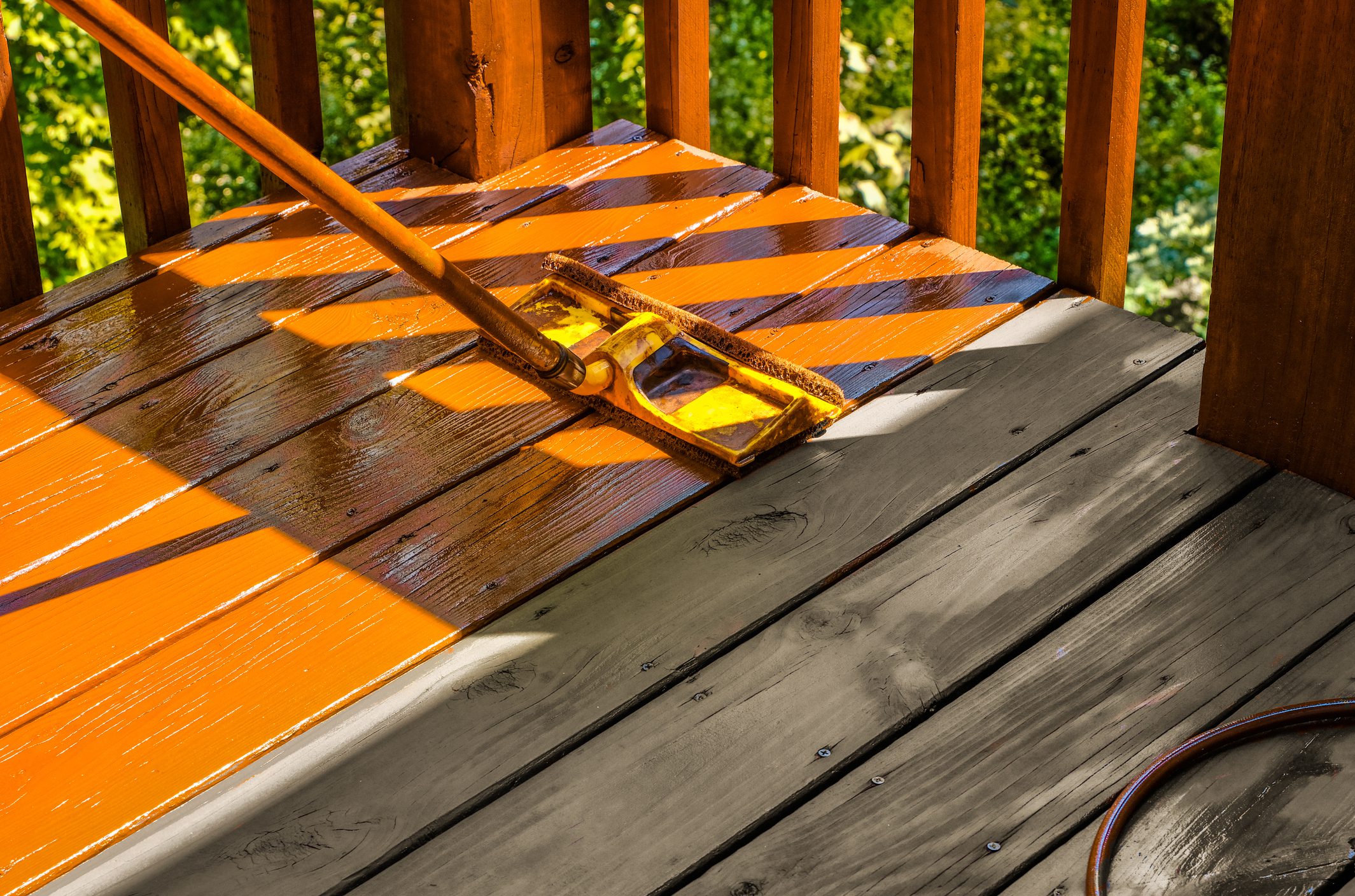Deck Staining Quality: Nurturing Your Outside Retreat
Deck Staining Quality: Nurturing Your Outside Retreat
Blog Article
Picking the Right Discoloration for Your Fence: Tips and Factors To Consider
When it pertains to preserving and enhancing the look of your fencing, picking the ideal discolor is important. With a wide array of options readily available, it can be overwhelming to figure out which tarnish will finest suit your requirements. This guide will give you with ideas and factors to consider to help you make an informed choice. We will certainly explore the different kinds of fencing discolorations, variables to think about before picking a discolor, pointers for preparing your fencing for staining, and the differences between water-based and oil-based spots. In addition, we will certainly look into choosing the appropriate tarnish shade to match your fence and boost your exterior area. By following these standards, you can make certain that your fence continues to be protected and visually pleasing for many years to come.
Understanding Different Sorts Of Fencing Spots

On the other hand, water-based discolorations are made from acrylic or latex and use an extra refined shade to the timber. Water-based stains are easier to cleanse up and have a faster drying time contrasted to oil-based spots.
Selecting in between oil-based and water-based discolorations depends upon various variables, including personal choice, the desired appearance, and the degree of maintenance required. Oil-based stains are suggested for fence high-traffic locations or those frequently revealed to severe climate conditions. fence staining and sealing. Water-based discolorations, on the various other hand, are a preferred selection for surround houses where appearance and ease of use are essential
Comprehending the differences in between oil-based and water-based discolorations assists homeowners make an informed decision when selecting the right stain for their fence. Taking into consideration the details requirements of the fence, such as its area, direct exposure to sunlight, and desired aesthetic, will certainly make sure that the selected stain offers durable security and improves the total elegance of the fence.
Variables to Think About Before Picking a Stain

Different types of timber take in discolorations differently, resulting in varying degrees of shade intensity and toughness. Furthermore, certain woods might be a lot more vulnerable to problems like rot or insect invasion, which may influence the option of stain to protect the fencing and shield.
The environment and weather conditions in your area must likewise be considered. You might need a tarnish that supplies added security against dampness and UV rays if you live in a location with rough winters or high moisture. If your fence is revealed to guide sunlight for lengthy durations, a tarnish with UV inhibitors can help protect against fading and discoloration.
Lastly, it's essential to consider your preferred aesthetic. Different stains supply numerous colors and coatings, permitting you to personalize the look of your fencing (fence staining and sealing). Consider the general design and style of your residential or commercial property, in addition to any type of neighborhood laws or home owner organization standards that might dictate the appropriate discolor colors
Tips for Preparing Your Fencing for Discoloration
To prepare your fence for staining, beginning by thoroughly cleansing the surface utilizing a light detergent and a stress washer or scrub brush. Cleaning up the fence is a vital action as it eliminates dirt, crud, and any previous coverings that may hinder the discoloration procedure. Begin by moistening the fence with water and afterwards use a mild detergent using a scrub brush or a stress washing machine with a low-pressure setup. Rub the surface carefully, paying additional focus to areas with persistent stains or mold and mildew. Wash the fence thoroughly with clean water to eliminate all traces of cleaning agent.
This action is important as discoloring a wet or moist surface area can lead to poor attachment and an unequal coating. Guarantee that the fencing is entirely dry prior to continuing with the discoloration process.
Before staining, evaluate the fencing for any kind of problems, such as loosened boards or nails. Fix any type of issues to ensure that the fencing is structurally sound. In addition, take into consideration applying a timber conditioner or brightener to the surface area. This item helps to open up the timber pores, permitting the stain to penetrate better and equally.

Comparing Oil-Based and Water-Based Spots
When choosing a tarnish for your fence, it is necessary to compare the attributes and benefits of water-based and oil-based stains. Both types of discolorations have their very own advantages and factors to consider, so it is critical to comprehend the differences between them.
Oil-based discolorations are known for their durability and resistance to tear and put on. Additionally, oil-based stains have a tendency to last longer than water-based stains, making them a popular option for fencings.
On the other hand, water-based stains are more eco friendly and much easier to clean up. They have a reduced VOC (unstable natural compound) content, which suggests they release less damaging fumes right into the air. Water-based discolorations also dry faster, enabling a quicker application and much less downtime. Nevertheless, they might not offer the same degree of defense as oil-based spots, specifically in rough climate condition.
Ultimately, the selection in between oil-based and water-based discolorations relies on your details demands and preferences. When making your decision, think about elements such as resilience, ecological influence, and convenience of application. Consulting with a professional or looking for suggestions from professionals can additionally assist make sure that you choose the right tarnish for your fencing.
Selecting the Right Discoloration Color for Your Fence
The option of an ideal tarnish color for your fencing is an important facet of improving its aesthetic allure and complementing the overall design of your exterior area (fence staining companies). The appropriate discolor color can change a level, ordinary fence into a striking prime focus that includes depth and personality to your residential or commercial property
When selecting a tarnish color for your fence, it is essential to think about the design and design of your home. If you have a timeless or traditional style home, natural tones such as browns and neutrals can develop a warm and welcoming appearance. On the other hand, if you have a modern or contemporary home, you could take into consideration choosing strong and lively shades that make a declaration.
An additional element to think about is the natural environments of your building. If you have a great deal of greenery, a tarnish shade that enhances the natural landscape, such as environment-friendlies or crimsons, can develop a harmonious and cohesive appearance.
In addition, it deserves considering the maintenance required for different discolor colors. Lighter shades have a tendency to show dust and use more quickly, while darker colors can hide flaws and need less frequent touch-ups.
Eventually, the choice of stain color for your fence ought to reflect your personal design and preferences - deck cleaning. Make the effort to explore different options and seek advice from with professionals if needed, to ensure that you pick the best discolor shade that boosts the appeal and charm of your fence
Final Thought
In final thought, when it comes to picking the appropriate discolor for your fence, it is essential to understand the various kinds of stains readily available and Going Here think about aspects such as resilience and preferred appearance. Picking the ideal discolor shade can enhance the overall aesthetics of your fence.
We will explore the different kinds of fencing spots, elements to think about before choosing a stain, pointers for preparing your fence for staining, and the differences in between water-based and oil-based discolorations.Separating between water-based and oil-based stains is critical when comprehending different kinds of fence spots. Water-based spots are easier to clean up and have a faster drying time contrasted to oil-based spots. Additionally, oil-based discolorations have a tendency to last longer than water-based spots, making them a prominent option for fencings.
In verdict, when it comes to picking the appropriate stain for your fence, it is crucial to recognize the different kinds of stains offered and take into consideration factors such as toughness and desired appearance.
Report this page